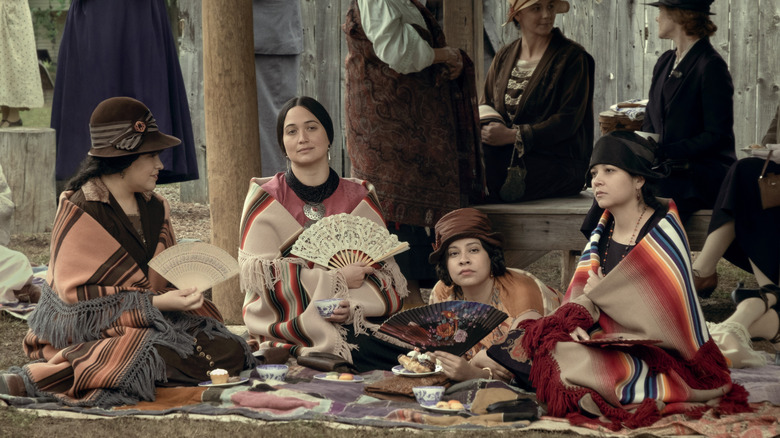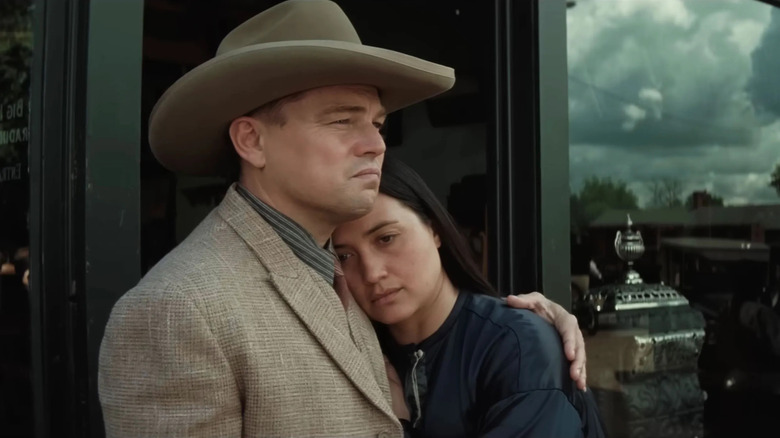What Does Killers Of The Flower Moon Actually Mean?
Martin Scorsese's latest film — "Killers of the Flower Moon" — documents the real-life tragedy that befell the Osage Nation in the early 20th century. After becoming rich after discovering oil on their land, numerous murders were committed by white infiltrators looking to take their oil head rights. A story about Indigenous people facing annihilation from colonizers continues to resonate to this day, and the poetic title shines a light on the abuse the Osage suffered.
The movie is based on the 2017 novel, "Killers of the Flower Moon: The Osage Murders and the Birth of the FBI" by David Grann. The title's meaning is explained at the beginning of the book, which describes a large moon appearing in May. Around this time, larger plants begin to engulf smaller flowers, with many of them dying in the process. The larger flowers steal sunlight and water, taking all of the resources for themselves, leaving nothing for anything else. It's an apt metaphor for white people encroaching on the land and oil that rightfully belonged to the Osage.
The concept of the "Killers of the Flower Moon" can be seen as officially starting with the murder of Anna Brown, whose death began "The Reign of Terror," as the newspapers dubbed it. Anna Brown's death also occurred in May, making a reference to the Flower Moon all the more appropriate.
Osage poet Elise Paschen referred to the Killers of the Flower Moon in Anna Brown tribute
The metaphor of the flower-moon killer didn't originate with David Grann. It can be found much earlier, including a 2009 poem from Osage poet Elise Paschen titled "Wi'-gi-e." The verse is told from the perspective of Mollie Burkhart as she recounts the death of her sister, Anna. The poem begins by describing the unsavory circumstances surrounding her death, including the sheriff misattributing it to whiskey poisoning and locals covering up the fact she had a bullet hole in her head. It ends with the passage, "During Xtha-cka Zhi-ga Tze-the, the Killer of the Flowers Moon. I will wade across the river of the blackfish, the otter, the beaver. I will climb the bank where the willow never dies."
Paschen evokes the imagery of flower replacement under the watch of the moon to describe how Anna Brown was killed for access to her resources. And it wasn't just the murderer responsible for her death who was to blame. An entire systemic issue manifested in Oklahoma where white people at all levels of power worked together to cover up multiple murders to separate the Osage from their head rights. And in the wider context of American history, it's all the more vile.
Indigenous people had this land first, which was overtaken by colonizers. They were then given reservations, but upon discovering oil and finding wealth, white settlers once again found a reason to separate the people who lived here first from what was theirs. And now, audiences can learn more about this story when "Killers of the Flower Moon" comes out in theaters on October 20.

